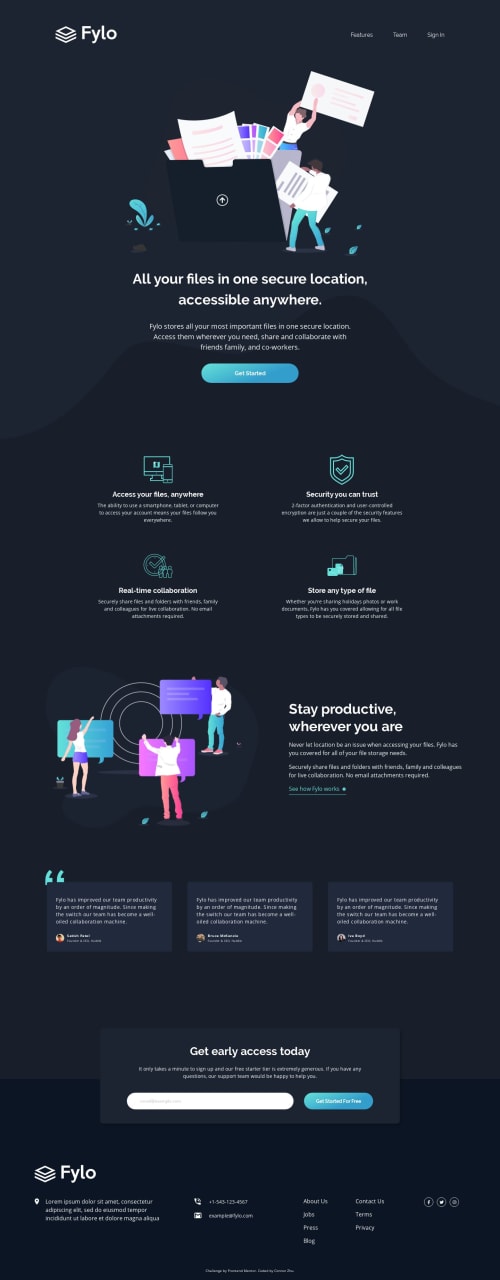Fylo dark theme landing page | Pure HTML CSS

Solution retrospective
Feedbacks are welcome!
I'm trying to practice components based CSS. That's why my code are kind hot mess LOL.
The background curve image at the intro section are kind tricky. I did it using two position: absolute sections, and then pushing margin top in the next component to make the space for the intro section.
Let me know if you have any better solution!
Thanks!
Please log in to post a comment
Log in with GitHubCommunity feedback
No feedback yet. Be the first to give feedback on Connor Z's solution.
Join our Discord community
Join thousands of Frontend Mentor community members taking the challenges, sharing resources, helping each other, and chatting about all things front-end!
Join our Discord